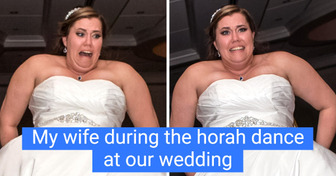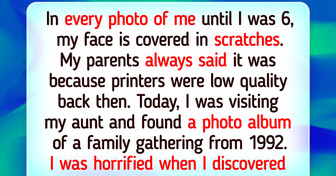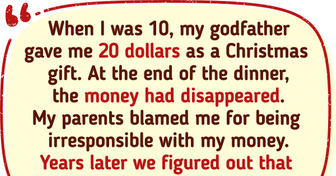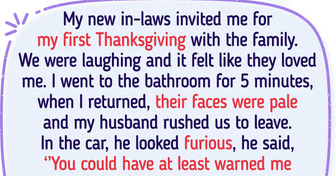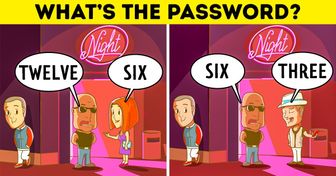20 People Who Found Something Intriguing One Day

Elegant jewelry is never out of fashion. Nowadays, it’s quite easy to find a suitable piece. You just have to make sure that it matches your outfit and is appropriate for the occasion. But in the previous centuries, jewelry could give away too much personal information about the person who wore it, from the level of society they belonged to, to their love interest.
The members of the Lingayat sect in India, followers of Shivaism, used to wear this jewelry. Only wealthy people could afford this necklace.
The jewelry was made of pure silver and decorated with intricate engravings. The 2 cones symbolized the horns of the sacred bull. The necklace was also a casket. A lingam stone was hidden in it, which played a big role in this religion.
Victoria, Queen of the United Kingdom, mourned her husband Prince Albert for 40 years. During this period, the Queen set an example to other ladies how they should mourn and what outfits and jewelry should be chosen when mourning. Victoria often wore a locket of Albert’s hair around her neck.
In the late 17th century, earrings became an integral part of a woman’s outfit. Jewelers invented a new way to cut diamonds, and these gems began to be used in jewelry more often. At the same time, ladies flaunted high and voluminous hairstyles.
To emphasize their expensive outfits, women wore complex earrings, consisting of several elements. The jewelry looked beautiful, but it was very heavy. Some earrings even had a special loop so that a lady could attach them to her hair and thereby reduce the load on her earlobes.
Some jewelry was used not just to make its owner feel beautiful, but ladies often adorned their outfits with an étui — a small case where they kept implements for household tasks.
Ladies could keep scissors, needles, thread, thimbles, pencils, and other necessary items in it. An étui was often made of gold and decorated with gems.
In the late 18th century — early 19th century, eye miniatures became very popular. It’s believed that it was the future king George IV who made this piece of jewelry trendy because he sent one of these miniatures to his lover Mrs. Maria Fitzherbert.
When giving this piece of jewelry as a present, people made a love confession to each other. It was a “safe” gift which a man or a woman could easily wear in public because it was difficult to guess the person who gave the gift just by the look of their eye.
Jewelry with the Hercules knot was popular in classical antiquity. This symbol had a different meaning in different countries. In some cultures, it was a token of love, in others it represented fertility.
The Ancient Greeks believed that this knot had the power to avert evil, and could cure wounds, helping them heal faster.
In the second half of the sixteenth century, jewelry in the form of living creatures, as well as fictional ones, became popular in Spain. Most often, craftsmen used images of sea creatures. People carried these pendants as talismans when they had to travel by sea. It was believed that this jewelry could protect against any misfortune during a long sea voyage.
Gimmel rings first appeared in the Middle Ages but became popular in the seventeenth century. This piece of jewelry could be divided into 2 parts. After an engagement was announced, each partner would wear their own ring.
During the wedding ceremony, the 2 rings would be joined, and the bride would put on the resulting piece of jewelry. This jewelry usually hid a message inside, which spoke of eternal love and unity. If one of the spouses went on a trip, the ring could be disconnected again.
During the Renaissance, jewelry became more elaborate and complex. Jewelers created real sculptures, covering the elements with enamel and encrusting the figurines with pearls and precious stones. Each element was done with great precision.
Along with other pieces of jewelry, pendants became especially popular. Some of them were used not only for the sake of beauty. Toothpicks, earpicks and other useful little things were attached to them.
In the Victorian era, there was jewelry in which craftsmen encrypted messages using various gemstones. To be able to read them, it was necessary to know which stones were used in the jewelry. Words were formed by putting together the first letters of the names of the stones.
The colors of a piece of jewelry could also matter. The suffragists, for example, chose white, purple, and green colors. Jewelry that had this combination of colors could be worn only by women who belonged to this organization.
In the 16th century, pearls were often used in jewelry. With their help, craftsmen skillfully created images of ethereal objects and creatures. Some people would wear this piece of jewelry on a chain, others would pin it to their clothing.
The animals sometimes had a symbolic meaning. So, a pendant in the form of a swan could indicate that a person belonged to the Society of the Virgin Mary.
It’s unknown who invented this piece of jewelry. According to one theory, these rings appeared in Ancient Egypt, while other researchers believe that China is their country of origin.
According to the most interesting legend, a puzzle ring was invented by a jealous husband who gave the ring to his wife without telling her how to solve it. The woman decided to be unfaithful and took off the ring. It fell apart, and she couldn’t put it back together. This was how the husband found out that his wife was cheating on him.
In the nineteenth century, floral motifs in jewelry became popular again. However, different flowers used in brooches, necklaces, rings, and earrings had hidden meanings.
There was a special language where each plant had its own meaning, and this language was known to almost everyone. A lot of books were published that explained how to interpret various combinations of flowers. Therefore, it was difficult to encrypt a secret message into a piece of jewelry.


